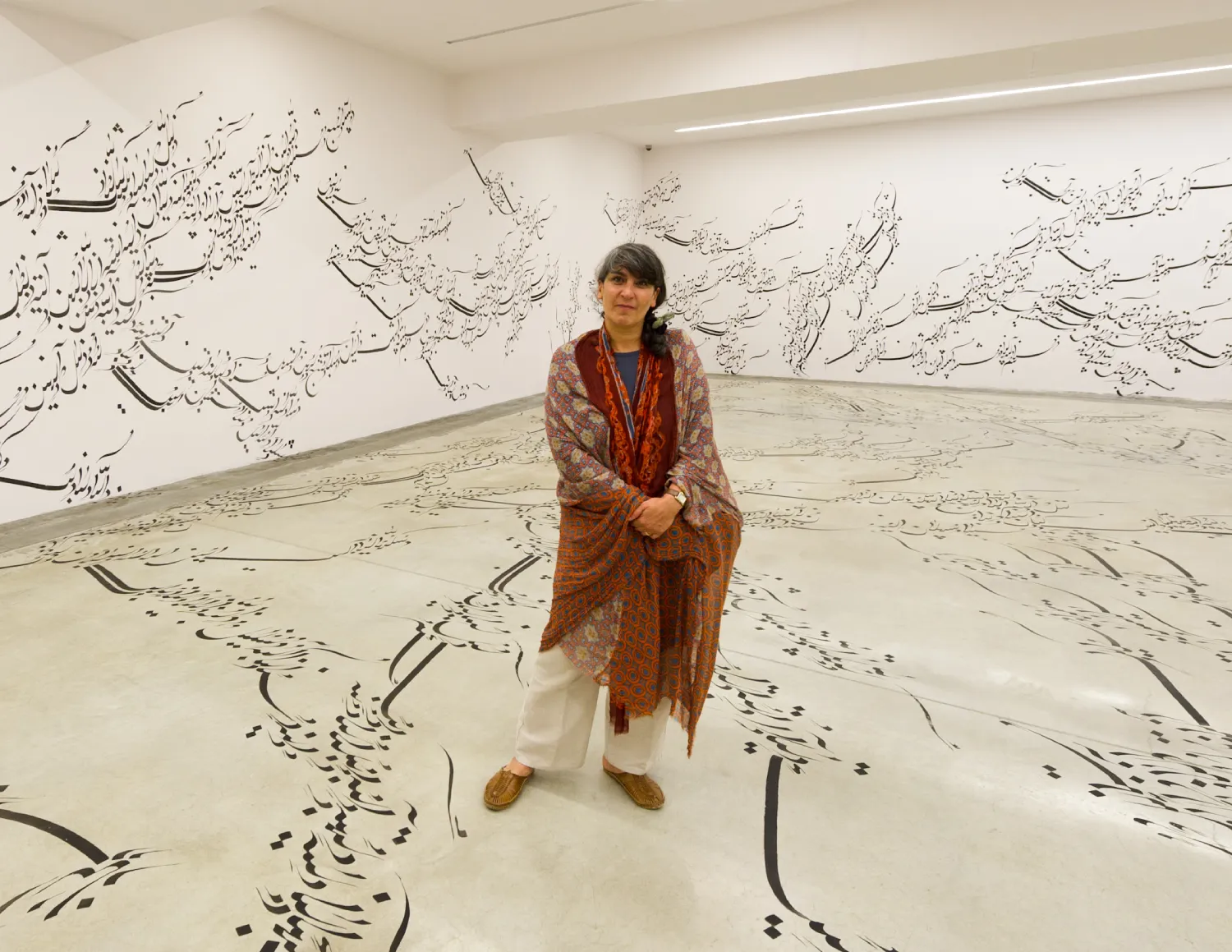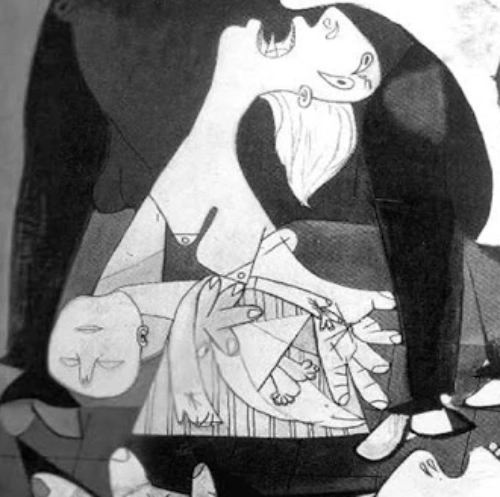Artemisia Gentileschi’s Judith-Trauma, Feminism, and Baroque Agency
Artemisia Gentileschi: Trauma, Agency, and the Female Gaze in Judith Slaying Holofernes
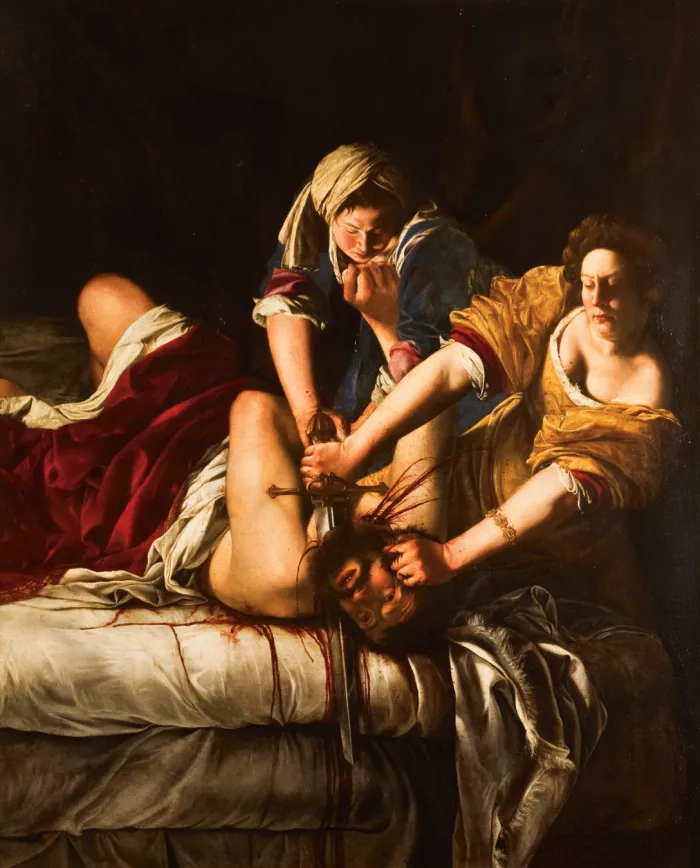
Fig. 1: Artemisia Gentileschi, Judith Slaying Holofernes (c. 1620; oil on canvas, 146.5 x 108 cm; Florence, Uffizi).
Artemisia Gentileschi[1] stands as a monumental figure in art history—a woman who achieved extraordinary success in the male-dominated Baroque era. Unlike her female contemporaries, who often restricted themselves to portraits or still lifes, Artemisia boldly pursued istoria (narrative painting), tackling dramatic biblical and mythological subjects, including female nudes and violent decapitations. Her most famous work, Judith Slaying Holofernes (Fig. 1)[2], exemplifies her mastery of Caravaggesque realism and her unflinching portrayal of female agency. Trained under her father, she adopted Caravaggio’s revolutionary techniques-direct observation, chiaroscuro, and emotional intensity but infused them with a distinctly female perspective. Her early Judith Slaying Holofernes shocked viewers with its graphic violence, depicting Judith and her maidservant actively slaughtering Holofernes in a scene of collaborative female power.[3]
A Visceral Interpretation of Female Agency
Artemisia Gentileschi's Judith Slaying Holofernes presents a visceral interpretation of the biblical narrative, distinguished by its unflinching portrayal of female agency and physical violence. The painting captures the climactic moment when Judith, having infiltrated the enemy camp under false pretenses, decapitates the Assyrian general Holofernes with the assistance of her maidservant, Abra. Unlike earlier Renaissance depictions which often sanitized the violence or emphasized Judith’s piety Artemisia’s composition confronts the viewer with the brutal mechanics of the act: the straining muscles of the women, the spouting blood staining Judith’s bodice, and the grotesque contortion of Holofernes’ face as life leaves his body. The work’s naturalism reflects Artemisia’s Caravaggesque training, yet it surpasses her male contemporaries in psychological intensity and attention to the physical effort required for the deed.[4]
Reception and Subversion of Baroque Norms
The painting’s reception history reveals much about contemporary attitudes toward female artistic expression. Commissioned by Cosimo II de’ Medici[5], the work was initially deemed too disturbing for public display, its raw violence transgressing Baroque decorum despite the biblical subject’s acceptability. This censure speaks to the discomfort provoked by Artemisia’s unique perspective: where male artists like Caravaggio[6] portrayed Judith as delicate and hesitant, Artemisia’s protagonist exhibits determined, almost professional competence in her violent act. The blood arcing across the composition possibly informed by Artemisia’s contact with Galileo’s scientific circle[7], serves not merely as graphic detail but as a visual metaphor for the irreversible nature of female action.[8]
Critical Discourse: Garrard vs. Pollock
The critical discourse surrounding Judith slaying Holofernes has become a focal point for methodological tensions within feminist art history, particularly in the exchange between Mary Garrard’s recuperative reading (1989)[9] and Griselda Pollock’s materialist critique [10](1990).[11] While the analysis astutely identifies the painting’s polyvalence-as biblical narrative, technical triumph, and gender commentary-Garrard’s foundational study interprets the collaborative violence between Judith and Abra through the lens of Artemisia’s traumatic rape by her paining tutor. Building on the 1612 trial transcripts, Garrard argues that the painting’s visceral brutality channels Artemisia’s personal trauma into artistic catharsis, with Abra’s participation symbolizing restitution for Tuzia’s betrayal. This constructs what Garrard terms Artemisia’s female hero paradigm a vision of autonomous feminine power resonant with second-wave feminist reclamation.[12]
Pollock, however, problematizes this approach by exposing its unexamined assumptions. While acknowledging Garrard’s pivotal role in rescuing Gentileschi from obscurity, Pollock demonstrates how the female hero framework inadvertently replicates masculinist models of individual genius. Her materialist analysis shifts focus to patronage conditions, highlighting the paradox of male Medici collectors commissioning works depicting male vulnerability. This contextual approach complicates the observation about the painting’s acceptance into the Medici collections: where Garrard might celebrate this as triumph over gender bias, Pollock reinterprets it as strategic negotiation within patriarchal systems rather than transcendence of them.[13]
Synthesis and Modern Reception
The theoretical stakes of this debate extend beyond Gentileschi studies. Garrard’s emphasis on female agency versus Pollock’s focus on structural constraints reflects a fundamental tension in feminist methodology: how to honor women’s achievements while critically examining the systems that constrained them. the analysis navigates this tension by maintaining the painting’s multiplicity of meanings a synthesis suggesting that the collaborative violence may reflect both lived female solidarity (à la Garrard) and a theologically sanctioned image of resistance (à la Pollock). This dialectical understanding proves particularly valuable when considering the work’s modern reception. Where Garrard’s female hero narrative resonated with late 20th-century feminism, Pollock’s critique anticipates contemporary concerns about intersectionality and the limitations of white feminist frameworks. Both approaches remain essential for grappling with the central paradox: how a work so radical in its gender politics could emerge from, and succeed within, profoundly patriarchal structures.[14]
Beyond Caravaggio: Artemisia Gentileschi’s Feminist Vision in Judith Beheading Holofernes

Fig.2: Caravaggio, Judith Slaying Holofernes (1602; oil on canvas, 145 x 195 cm; Rome, Gallerie Nazionali di Arte Antica - Palazzo Barberini).
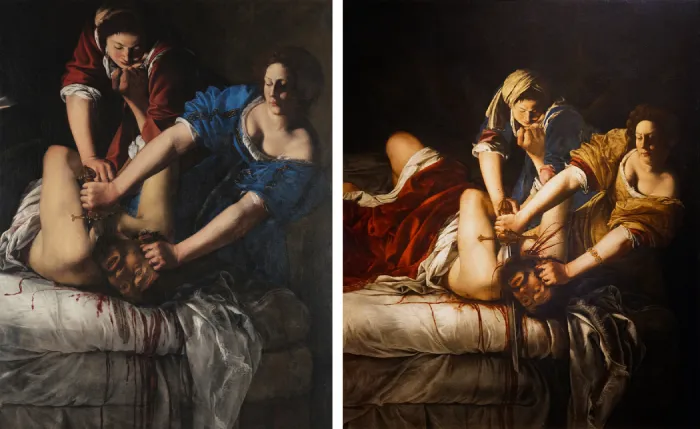
Fig. 3: Left: Artemisia Gentileschi, Judith slaying Holofernes (1612 or 1617; oil on canvas, 159 x 126 cm; Naples, Museo e Real Bosco di), Right: See Fig. 1.
Artemisia Gentileschi’s depictions of Judith slaying Holofernes have often been interpreted through a feminist lens due to her personal history as a rape survivor and her status as a woman in a male-dominated profession.[15] While her works share thematic and compositional elements with Caravaggio’s earlier rendition, Artemisia’s versions intensify the physical struggle and violence (See Fig. 2). Unlike Caravaggio, who portrays Judith as delicate and her maid as an elderly onlooker, Artemisia depicts both women as young, strong, and actively collaborating in the act. The Capodimonte version, likely painted around 1613 or 1617, emphasizes raw brutality, with Holofernes’s contorted body and the women’s forceful grips, while the Uffizi version (c. 1620) refines the composition with richer textures and more dynamic blood splatter, possibly influenced by Galileo’s studies on parabolic motion (See Fig. 3).[16]
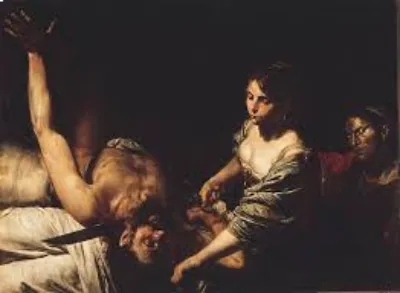
Fig. 4: Valentin de Boulogne, Judith Slaying Holofernes (c. 1627-1629; oil on canvas, 160 x 141 cm; Valletta, MUŻA, National Community Art Museum).

Fig. 5: Louis Finson, Judith Slaying Holofernes (after 1607; oil on canvas, 140 x 161 cm; Intesa Sanpaolo.
Recent scholarship has contextualized Artemisia’s violent imagery within broader 17th-century artistic trends, noting that male contemporaries like Valentin de Boulogne and Louis Finson (Figs. 4 and 5)[17] also depicted similarly graphic scenes.[18] However, Artemisia’s focus on female agency remains distinctive. Her Judiths are not passive avengers but determined actors, a contrast to Caravaggio’s more ambivalent heroine. The Uffizi version’s added details such as Judith’s Artemis-adorned bracelet—may reflect Artemisia’s personal identification with the story, yet the painting also aligns with Counter-Reformation iconography, where Judith symbolized the Church’s triumph over heresy. Despite initial rejection for its brutality, the work exemplifies Artemisia’s mastery of Baroque realism, merging psychological intensity with technical precision.[19]
Artemisia Gentileschi, Feminist Reclamation, and the Question of "Greatness"
The exclusion of women artists from the traditional canon, as famously interrogated by Linda Nochlin[20] in "Why Have There Been No Great Women Artists?" (1971), finds a compelling counterpoint in the work of Artemisia Gentileschi. Gentileschi’s Judith Slaying Holofernes not only demonstrates technical mastery comparable to her male contemporaries but also subverts gendered expectations of subject matter and authorship. As Jesse M. Locker notes in Artemisia Gentileschi: The Language of Painting, Gentileschi’s paintings "speak in a powerful and distinctly personal voice" (Locker, 2015, p. 5), challenging the notion that women were incapable of producing works of intellectual and emotional depth. The visceral violence of Judith Slaying Holofernes—where the biblical heroine, assisted by her maidservant, decapitates the Assyrian general—defies the passive, eroticized female figures prevalent in Baroque art. Instead, Gentileschi constructs a narrative of collective female agency, a theme that aligns with Griselda Pollock’s argument in "Agency and the Avant-Garde" that feminist art history must recover "the suppressed histories of women’s cultural production" (Pollock, 1990, p. 57).
Nochlin’s assertion that institutional barriers—rather than innate ability—prevented women from achieving recognition as "great artists" is borne out in Gentileschi’s career. Despite her training under her father, Orazio Gentileschi[21], and her later success in Florence and Naples, she faced systemic obstacles, including limited access to prestigious commissions and the overshadowing influence of male peers like Caravaggio. Locker emphasizes that Gentileschi’s work was often framed through the lens of her biography (particularly her rape trial), rather than evaluated on its own merits.[22] This gendered bias exemplifies Nochlin’s critique of how art history privileges male artists as autonomous geniuses while reducing women to marginal figures or muses.
Pollock’s framework further illuminates how Gentileschi’s Judith reclaims female subjectivity. Unlike male depictions of the same scene-such as Caravaggio’s more theatrical rendering-Gentileschi’s Judith is not merely a symbolic heroine but an active participant in her own narrative. The physical exertion and collaboration between Judith and her maidservant underscore a distinctly female perspective, one that Pollock argues has been systematically erased from dominant art historical discourse.[23] By centering women as both creators and protagonists, Gentileschi’s work disrupts the patriarchal structures Nochlin critiques, offering a corrective to the myth of the solitary (male) artistic genius.
Artemisia’s Achievement in Context
Gentileschi’s Painting serves as both an artistic triumph and a testament to the systemic barriers Nochlin exposes. Through Locker’s analysis of her technical innovation and Pollock’s feminist lens, we see how Gentileschi’s exclusion from the "great artist" narrative was not a reflection of her skill but of the gendered hierarchies that shaped art history. Recovering her work thus becomes an act of feminist revisionism, affirming Nochlin’s call to dismantle the structures that have silenced women’s contributions.[24]
Essay by Malihe Norouzi / Independent Art Scholar
References:
1. Artemisia Gentileschi (1593 Italy –1653 Italy).
2. Judith Slaying Holofernes (c. 1620).
3. Locker, Jesse. M. (2015) Artemisia Gentileschi: The language of painting. New Haven and London: Yale University Press. ISBN: 978-0-300-18511-9, pp. 1-18.
4. Uffizi Galleries. (n.d.) Judith Beheading Holofernes by Artemisia Gentileschi. [Online] (Accessed: 18 June 2025).
5. Cosimo II de’ Medici (1590 Italy–1621 Italy).
6. Caravaggio (1571 Italy–1610 Italy).
7. Galileo Galilei (1564 Italy–1642 Italy).
8. See Ref. 4.
9. Mary Garrard (1937 US).
10. Griselda Pollock (1949 South Africa).
11. Pollock, Griselda. (1990) ‘Agency and the Avant-Garde: Studies in Authorship and Feminism’, The Art Bulletin, 72(3), pp. 499-505. (Accessed: 17 June 2025).
12. See Ref. 3.
13. See Ref. 11.
14. Ibid.
15. Finestre sull’Arte. (n.d.). Judith enthauptet Holofernes, das Meisterwerk von Artemisia Gentileschi. [online] (Accessed: 18 June 2025).
16. SmartHistory. (n.d.). Artemisia Gentileschi, Judith Slaying Holofernes. [online] (Accessed: 18 June 2025).
17. Valentin de Boulogne (1591 France–1632 Italy) and Louis Finson (1580 Belgium–1617 Netherlands).
18. See Ref. 15.
19. See Ref. 16.
20. Linda Nochlin (1931 US–2017 US).
21. Orazio Gentileschi (1563 Italy–1639 UK).
22. See Ref. 3. P. 12.
23. See Ref. 11. P. 60.
24. Nochlin, Linda. (1971) ‘Why have there been no great women artists?’, ARTnews, 69(9), pp. 4–7.
Image Sources & Cover Image:
Finestre sull’Arte (n.d.) Judith enthauptet Holofernes (Paintings and Cover Image), Artemisia Gentileschi [Painting]. (Accessed: 18 June 2025).
